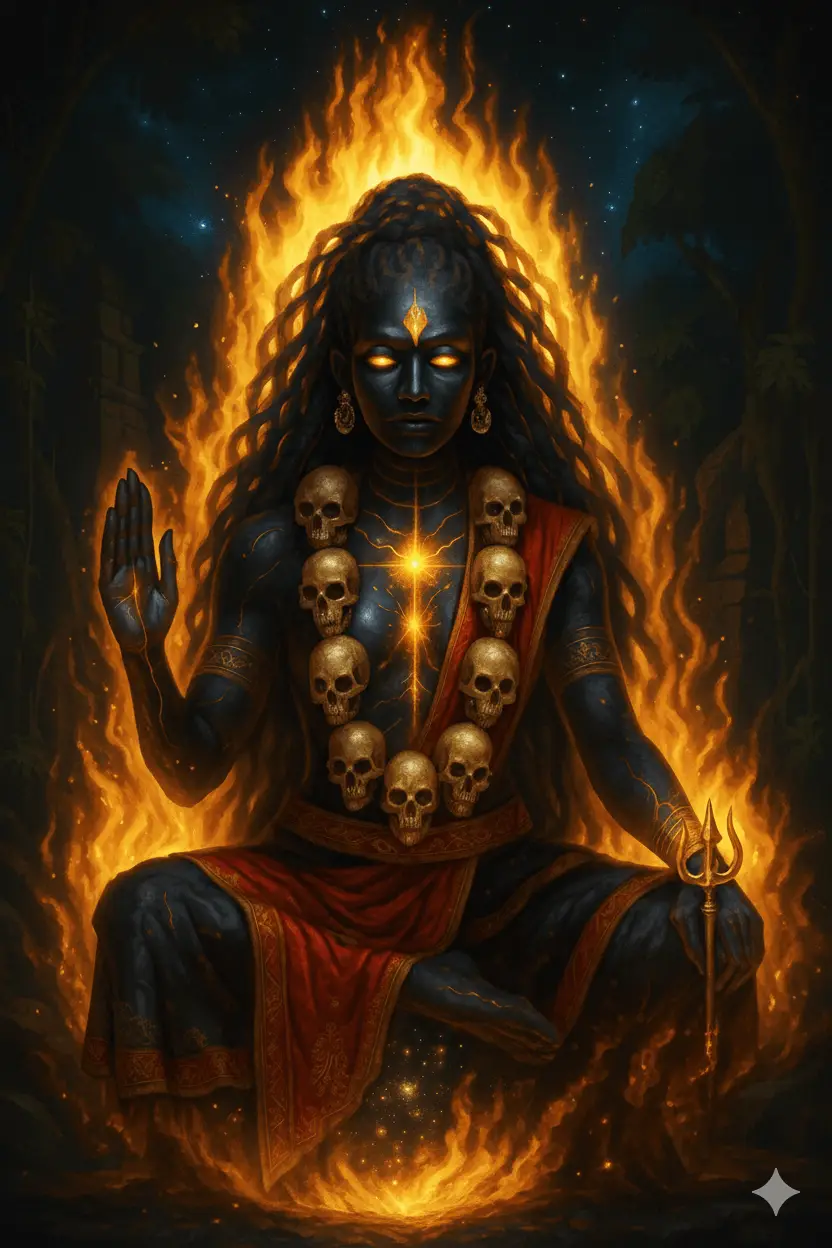Walk into any modern wellness retreat, and you'll likely find tantra workshops promising "sacred sexuality" and "divine union." Scroll through Instagram, and tantric coaches are selling everything from breathing techniques to weekend intensives. But here's the thing that's got spiritual seekers scratching their heads: is this actually tantra, or something else entirely?
The short answer? Modern tantra isn't inherently "bad," but it's so different from ancient practices that calling them the same thing is like comparing a sports car to a horse-drawn carriage. Both get you places, but the journey: and destination: are completely different.
Let's dive into what ancient wisdom really teaches about tantra, and why the modern version has spiritual teachers both celebrating and cringing.
What Ancient Tantra Actually Was
Forget everything you think you know about candles, rose petals, and sensual massage. Classical tantra, which emerged in the 7th century across Buddhist, Hindu, and Jain traditions, was primarily about consciousness expansion and enlightenment: not bedroom activities.
The ancient practitioners were basically spiritual scientists, developing sophisticated techniques to liberate the body, open energetic pathways, and achieve wholeness. Their toolkit included:
- Mantras (sacred sounds and chants)
- Yantras (geometric meditation diagrams)
- Complex rituals and ceremonies
- Advanced visualization practices
- Energy work and chakra systems
Sexual practices, when they appeared at all, were typically done through visualization rather than physical acts. The goal wasn't better orgasms or relationship harmony: it was transcending ordinary consciousness and achieving spiritual liberation.

Think of it this way: ancient tantra was like a comprehensive university curriculum for consciousness. Modern tantra? It's more like taking just the one elective course that seemed most interesting and calling it the whole degree.
How We Got Here: The Birth of Neo-Tantra
Modern tantra: or "neo-tantra" as scholars call it: is actually pretty new, emerging only in the last 150 years. This approach flipped the script entirely, placing sacred sexuality at the center rather than treating it as one small piece of a much larger puzzle.
The shift happened for understandable reasons. Western culture was (and still is) pretty messed up about sexuality, carrying tons of shame, repression, and dysfunction. Neo-tantra offered a path to heal these wounds by treating sexual energy as sacred and using conscious intimacy as a spiritual practice.
But here's where things get complicated. While neo-tantra addressed real needs around sexual healing, it essentially cherry-picked a tiny fraction of ancient tantric teachings: specifically those relating to sexuality: and built an entire practice around them.
It's kind of like taking one paragraph from a thousand-page medical textbook about the heart and claiming you're now a cardiologist. The information might be accurate, but you're missing 99% of the essential knowledge.
The Problems with Commercialized Spirituality
The most serious concern with modern tantra isn't its focus on sexuality: it's what got left behind in the rush to make ancient wisdom accessible and marketable.
Traditional tantric teachings came with comprehensive guidance about karma, ethics, and the responsible use of spiritual power. Students spent years studying under qualified masters who understood not just the techniques, but the moral framework that prevented their misuse.

Modern tantra often skips this foundation entirely. People jump straight into powerful practices without understanding how to use the energy they're awakening responsibly. The results have been predictable and problematic:
- Teachers exploiting students sexually under the guise of "spiritual connection"
- Practitioners confusing ego gratification with spiritual growth
- Massage therapists and healers crossing boundaries with vulnerable clients
- Weekend warriors treating sacred practices like spiritual entertainment
Ancient tantric masters had a term for sexual practices that didn't serve genuine transformation: they called them sinful. Not because sex itself is bad, but because using spiritual techniques for purely personal pleasure or power actually creates more suffering rather than liberation.
The Baby and the Bathwater
Before we throw modern tantra completely under the bus, let's acknowledge what it has gotten right. Neo-tantra's emphasis on accessibility and personal empowerment has genuinely helped people heal sexual shame and trauma. For many, these approaches have been a gateway to integrating sexuality with spirituality in healthy ways.
The democratization of tantric practices has also challenged the gatekeeping that sometimes kept ancient wisdom locked away from ordinary people. Not everyone needs to spend decades in a monastery to benefit from mindful breathing or energy awareness.
The key insight from ancient wisdom is this: "Nothing is good, nothing is bad" in absolute terms. What matters is discernment: the ability to recognize what actually serves spiritual growth versus what feeds the ego.
Red Flags vs. Green Lights
So how do you tell the difference between authentic tantric practice and commercialized spirituality? Ancient wisdom offers some clear guidelines:
Red flags to watch for:
- Promises of quick fixes or instant enlightenment
- Teachers who seem more focused on their own status than student welfare
- Practices that feel more about personal power than service to something greater
- Lack of ethical guidelines or boundary discussions
- Emphasis on technique without philosophical foundation
Green lights that suggest authentic practice:
- Teachers who emphasize ethics and responsibility alongside techniques
- Clear boundaries and consent protocols
- Integration of meditation, philosophy, and practical wisdom
- Focus on long-term transformation rather than peak experiences
- Recognition that spiritual growth includes shadow work and healing

The ancient tradition teaches that genuine tantric practice should serve the dissolution of suffering for all beings, not just personal pleasure or empowerment. When modern approaches maintain this deeper purpose while adapting for contemporary life, they can honor tradition's essence even while changing its form.
Finding Your Path Forward
If you're drawn to tantric practices: whether ancient or modern: the key is approaching them with the right motivation and proper preparation. Ask yourself:
- Am I seeking genuine spiritual growth or just better experiences?
- Do I understand the ethical implications of working with powerful energies?
- Am I willing to do the inner work that authentic transformation requires?
- Does this teacher/approach emphasize wisdom alongside technique?
Remember, the goal of any authentic spiritual practice is liberation from ignorance and suffering. If your tantric exploration is making you more self-centered, entitled, or disconnected from others, it's probably missing the mark: regardless of whether it's labeled "ancient" or "modern."
The Bottom Line
Modern tantra isn't inherently bad, but it's often incomplete. It's taken one beautiful thread from an intricate tapestry and tried to weave an entire practice around it. This can work, but only if practitioners understand what they're missing and take responsibility for filling in the gaps.
The ancient wisdom reminds us that the ultimate test of any spiritual practice isn't how good it makes us feel in the moment, but whether it genuinely liberates us from the patterns that cause suffering: for ourselves and others.
Whether you choose classical study, modern approaches, or something in between, let your practice be guided by genuine reverence for the sacred, respect for all beings, and commitment to growth that serves something larger than personal gratification.
That's what the ancients really taught: and it's wisdom we desperately need today.



